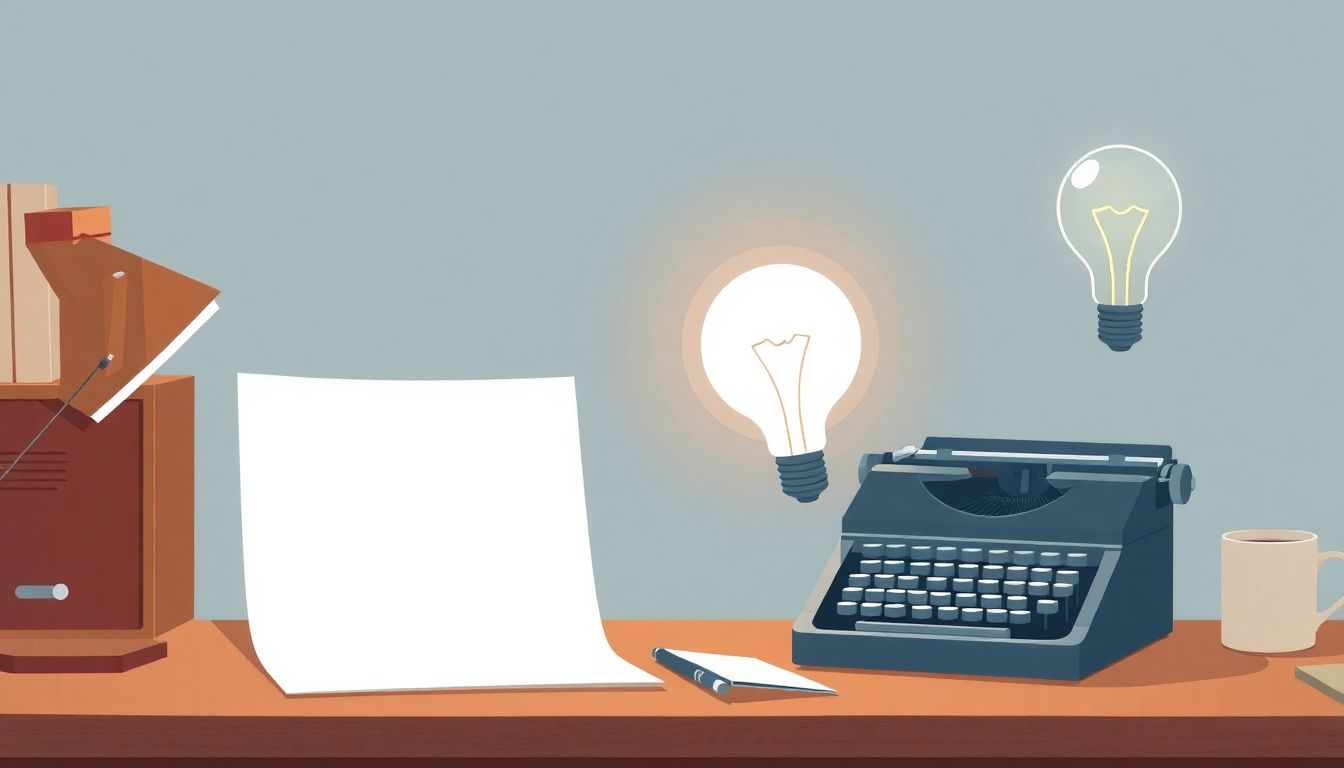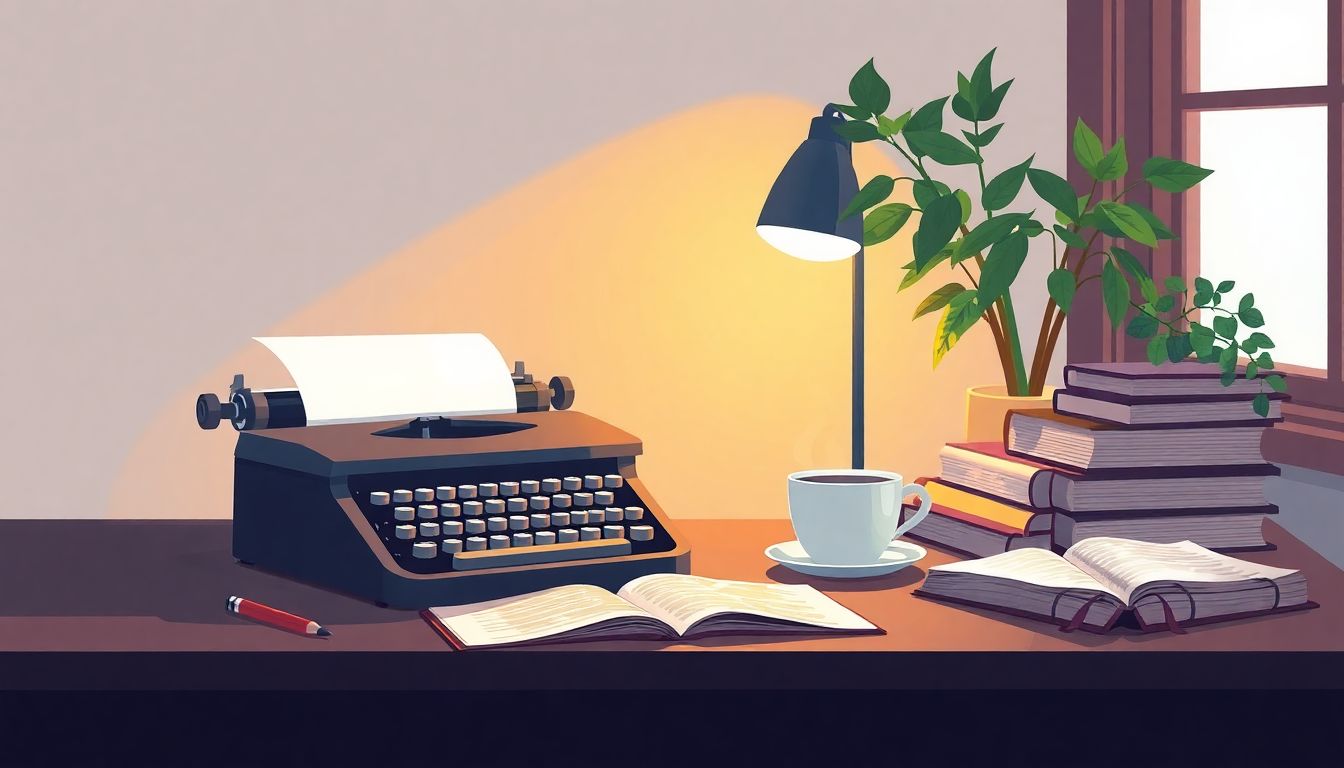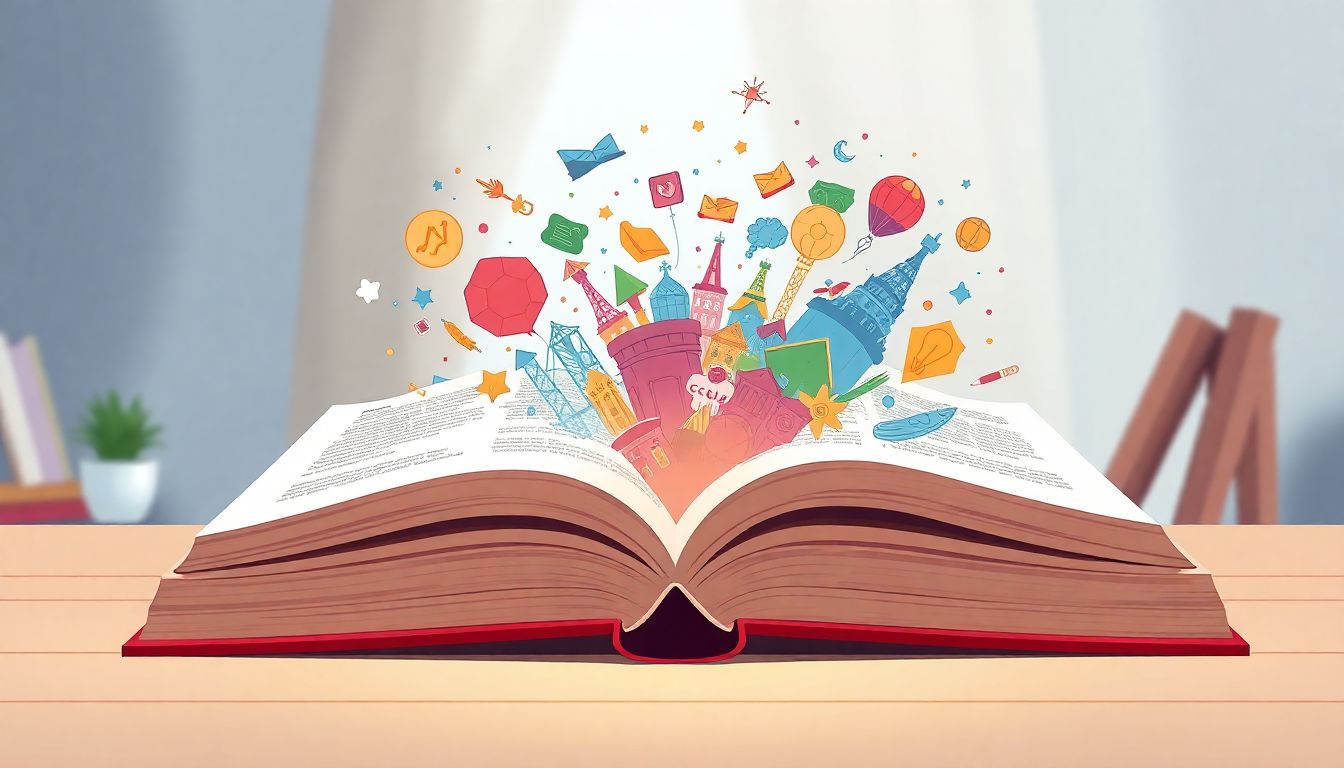If you’ve ever found yourself staring at a blank page, struggling to breathe life into your stories, you’re not alone. Many writers hit that wall, facing the daunting task of crafting captivating narratives and memorable characters. It can feel overwhelming, like you need a secret decoder ring just to get started!
But what if I told you there’s a way to spark your creativity and transform your storytelling process? By harnessing the power of ChatGPT, you can unlock innovative techniques that will elevate your writing, making it more engaging and dynamic. Stick around, and I’ll share some handy tips that could change your writing game forever.
From creating compelling characters to building suspense, we’re diving into how you can use ChatGPT to enhance your stories. You’ll come away with practical advice that could turn your writing frustration into pure joy!
Key Takeaways
- Use ChatGPT to brainstorm character ideas, plot twists, and dramatic settings to enhance your storytelling.
- Request specific prompts for character profiles to create relatable and memorable characters.
- Generate suspenseful scenes and cliffhangers with ChatGPT to keep your readers engaged.
- Craft detailed settings using sensory prompts to make your story’s backdrop feel alive.
- Create natural and engaging dialogues that reflect your characters’ personalities and emotions.
- Utilize ChatGPT to outline plot structures and suggest twists for a compelling narrative.
- Incorporate themes and messages into your story to give it depth and meaning, encouraging reader reflection.

Storytelling Techniques You Can Use with ChatGPT
When it comes to storytelling, ChatGPT is an incredible tool for enhancing your narrative techniques.
By leveraging AI, you can spice up your writing with fresh ideas and unique perspectives.
For instance, you can get ChatGPT to brainstorm creative twists or develop engaging scenarios.
Here’s how to leverage ChatGPT for storytelling:
- Ask for character ideas.
- Request plot twists or conflicts that can add depth to your story.
- Get suggestions for dramatic settings that complement your narrative.
With the right prompts, you can improve your narrative flow and make your storytelling more immersive.
How to Create Compelling Characters in Your Stories with ChatGPT
Creating relatable and memorable characters is essential for any story.
ChatGPT can help you develop well-rounded characters by providing unique traits and arcs.
Consider these prompts for character creation:
- “Generate a character profile for a reluctant hero on a quest.”
- “List five unique character traits for an antagonist seeking redemption.”
- “Describe a supporting character who challenges the protagonist’s beliefs.”
These prompts guide ChatGPT to produce detailed character sketches and development tips.
Using its suggestions, you can give your characters depth, ensuring they resonate with readers.
Using ChatGPT to Build Suspense and Tension in Your Narrative
Building suspense and tension can keep readers on the edge of their seats.
ChatGPT can assist you in crafting moments of tension that propel your story forward.
Try these prompts to create suspenseful scenes:
- “Write a scene where the protagonist discovers a hidden danger.”
- “Create a cliffhanger that leaves the reader questioning what happens next.”
- “Describe a moment when the stakes are raised during the story’s climax.”
Using these prompts will help generate conflict and suspense, making your narrative more engaging.
Remember, pacing is crucial; use ChatGPT to adjust the build-up and ensure peak tension is reached at the right moment.
Making Your Setting Come Alive with ChatGPT Prompts
Your story’s setting is more than just a backdrop; it’s a character in its own right.
ChatGPT can help you craft immersive settings that draw readers in.
Consider these prompts to enrich your world-building:
- “Describe a bustling market in a fantasy world using sensory details.”
- “Create a detailed setting for a climactic battle scene.”
- “Write a paragraph about the history and atmosphere of a haunted house.”
By focusing on environmental details, you can create an atmosphere that complements your narrative.
Whether it’s a cozy café or a dystopian city, making your setting vivid makes your story more engaging.

How to Craft Engaging Dialogues with ChatGPT
Creating engaging dialogue is key to making your characters feel real and relatable.
ChatGPT can assist you in developing natural conversations that reflect your characters’ personalities and motivations.
Here are some effective prompts to get you started:
- “Write a conversation between a hero and their best friend before a big battle.”
- “Generate a tense dialogue where two characters confront each other about a past betrayal.”
- “Create a lighthearted exchange between two characters who are planning a surprise party.”
Using these prompts, you’ll discover various styles and tones that can elevate your storytelling.
Pay attention to the rhythm and flow of the conversation to make it feel organic.
Don’t hesitate to use ChatGPT to rewrite and refine your dialogues until they capture the essence of your characters.
Developing a Strong Plot Structure with ChatGPT Assistance
A strong plot structure is crucial for keeping your readers engaged from beginning to end.
ChatGPT can help you create outlines, suggest plot twists, and ensure your story has a satisfying arc.
Here are some prompts to streamline your plot development:
- “Outline a three-act structure for a mystery novel involving a missing person.”
- “Generate a list of plot twists for a romantic comedy where the couple has a major misunderstanding.”
- “Create an outline for a fantasy story about a hero who must complete three trials.”
When crafting your plot, consider the pacing and how each scene builds on the previous one.
Use ChatGPT as your brainstorming partner to unlock creative ideas that may not have crossed your mind.
This collaborative process can produce a well-rounded and compelling plot that resonates with readers.
Incorporating Themes and Messages into Your Story Using ChatGPT
Every impactful story carries underlying themes and messages that resonate with readers.
ChatGPT can assist you in weaving these themes into your narrative, enhancing its depth and meaning.
Here are some prompts to explore themes in your writing:
- “Suggest three major themes for a story about overcoming adversity.”
- “Develop a narrative that illustrates the theme of friendship through a series of events.”
- “Create dialogue that subtly incorporates the message of environmental conservation.”
Dive into discussions around these themes and let ChatGPT generate examples that can inspire your storytelling.
By blending themes naturally into the plot, you’ll encourage readers to reflect on the messages you want to convey.
This not only enriches the reading experience but can also spark meaningful conversations around your work.

Benefits of Using ChatGPT for Storytelling
Using ChatGPT for storytelling offers a range of benefits that can transform your writing process.
First and foremost, it saves you time by providing quick ideas and suggestions, allowing you to focus on refining your narrative instead of getting stuck in writer’s block.
It also brings a wealth of creativity, often presenting unique perspectives and plot developments you might not have considered.
Another advantage is its ability to generate diverse characters and dialogue that add richness to your work.
Using ChatGPT can significantly improve your editing process as well; the AI can help identify inconsistencies and suggest improvements.
Lastly, it can be a great source of inspiration, offering prompts and ideas that spark your imagination.
To explore these benefits, try prompts like:
- “List five advantages of using AI for storytelling.”
- “Generate unique plot ideas based on random themes.”
- “Create an outline for a short story based on a common moral lesson.”
With AI, your storytelling journey can become smoother, more innovative, and enjoyable.
Tips for Refining Your Story Draft with ChatGPT
Refining your story draft is crucial for creating a polished final product.
ChatGPT can be a valuable partner in this stage, helping you spot errors and improve narrative flow.
Start by getting feedback on your draft with prompts such as:
- “Review this paragraph and suggest improvements.”
- “Identify any inconsistencies in this character’s motivation.”
- “Suggest ways to enhance the emotional impact of this scene.”
After you revise, you can also use ChatGPT to read your draft critically.
Ask it to summarize the main points or themes in your story to ensure clarity.
Additionally, you can request structured feedback, asking questions like:
- “What are the strengths of this narrative?”
- “What aspects of the plot might confuse readers?”
- “Does the dialogue sound realistic and fit the characters?”
This interactive process with AI can lead to a more refined and cohesive story.
Examples of Effective Prompts for Storytelling with ChatGPT
Effective prompts are key to getting the most out of ChatGPT for your storytelling needs.
These commands guide the AI to generate content that enhances your creativity and plot development.
Here are some examples of prompts you can use to inspire your writing:
- “Create an intriguing opening sentence for a thriller novel.”
- “Generate a backstory for a character who’s a detective with a troubled past.”
- “List five potential conflicts that could arise in a story about two rival towns.”
- “Suggest a twist ending for a short story centered on a family secret.”
- “Write a fictional news report based on the events of a fantasy novel I’m working on.”
Using these specific prompts can lead to innovative ideas and solutions that elevates your writing.
Keep experimenting with different types of prompts and adjust them based on your story’s needs.
Through this process, you’ll find the prompt style that resonates with your creative process the most.
Conclusion: Enhancing Your Storytelling Skills with ChatGPT
Incorporating ChatGPT into your storytelling process can elevate your writing to new heights.
From brainstorming ideas to refining drafts, AI acts as a versatile tool in your creative arsenal.
The benefits are clear—ChatGPT offers unique insights, saves time, and can help you sharpen your narrative techniques.
As you get comfortable using prompts and suggestions, let your creativity flow freely and don’t be afraid to think outside the box.
Your storytelling journey will not only become easier but also more enjoyable and fruitful.
So go ahead and embrace this technology as a companion in your writing adventures!
FAQs
Utilize ChatGPT to generate detailed character profiles, explore their motivations, and develop their backstories. You can also ask for dialogue prompts that match their personality, helping to make them more relatable and dynamic in your narratives.
Leverage ChatGPT to brainstorm unexpected plot twists, set up cliffhangers, and craft engaging scenarios that raise the stakes. Ask for scenarios that gradually escalate tension, keeping the reader engaged and eager to find out what happens next.
Ask ChatGPT for feedback on specific sections, request alternative phrasing for dialogues, or seek advice on plot development. Prompts like “How can I improve this scene?” or “What do you think of this character’s motivation?” can be very helpful.
ChatGPT enhances creativity by providing instant feedback, idea generation, and character development support. It helps streamline the writing process, offering diverse perspectives and solutions to plot issues, making storytelling more efficient and enjoyable.
